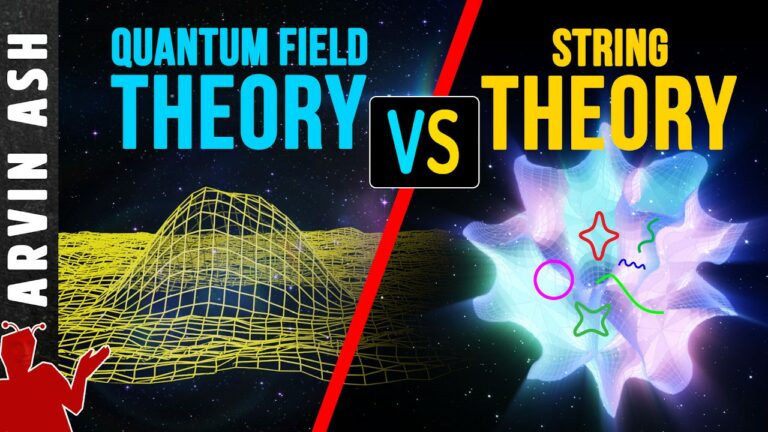The Battle for Reality: String Theory vs Quantum Field Theory
How is string theory related to quantum field theory? Quantum field theory (QFT) is a mathematical
framework that is close to a theory of everything. It describes nearly all particles and forces in the universe, and is consolidated into an overarching theory – the standard model of particle physics. But it is incomplete because it doesn’t explain gravity. Enter string theory, which sounds crazy, mainly because it proposes a universe made of vibrating strings and with at least 10 dimensions! We only know of 4, the three spatial dimensions and time. It claims that at least 6 other dimensions are hidden from us. But it is popular because it has an answer explaining gravity in quantum mechanical terms.
String theory posits that the smallest building blocks of the universe are not point-like particles, but tiny, one-dimensional “strings” that vibrate at various frequencies and in different dimensions. Different combinations of frequency and dimensions describe all the different types of matter, forces and energy in the universe. There are several string theories, all related to a deeper overarching theory called M-theory.
Quantum field theory posits that all particles are excitations in fields that span the entire universe, and that forces are due to the interaction of these particles mediated by other particles called bosons.
Both theories in principle can mathematically describe all particles and forces. But we know quantum field theory works. This is not the case for string theory, but we continue to bother with it is because it can model particle that looks identical to the graviton, the theorized missing boson particle that could quantize gravity.
String theory models a particle with zero mass and spin of 2, which would be a graviton. It needs to have no mass because gravity propagates at the speed of light and has an infinite range. Only a massless boson particle could have such properties. A spin 2 is required to model an exclusively attractive force which is what gravity is.
Quantum Field Theory can also describe gravitons – as excitations in a theoretical graviton field. But the problem with trying to quantize gravity in quantum field theory is renormalization. This is the procedure of making a theory valid to infinitesimally small lengths. When we try to do this, we get infinities in the equations. So quantizing gravity using QFT, doesn’t work.
Unlike QFT, String theory solves the issue of quantizing gravity. But the price we pay is that is that we have to contend with 6 to 7 extra dimensions. This is a problem because these dimensions have never been detected.
Scientists have come up with explanations about where the missing dimensions might be. One is compactification. It’s like floss – from far away, it looks like a thin 1D line. But as you look at it more closely, we can see it is 3 dimensional.
Another solution to the missing dimensions is that there could be super dimensional membranes in a 4th dimension isolated from us. We would have to exist outside of our local brane to see these extra dimensions.
If we could detect these extra dimensions, It would be significant evidence indicating that string theory is likely a superior model of the universe, and that QFT is an approximation.
But there are some similarities between QFT and String theory. The amplitude in QFT corresponds to the number of particles, just like the amplitude of the vibrations in string theory also corresponds to the number of particles.
Why does String Theory need all these dimensions? because its mathematics does not work in 4 dimensions. It only works if we allow the strings to vibrate in at least 10 dimensions. Note that extra dimensions could also be theorized in quantum field theories, but we have not needed them to make the theory work. The math works fine as long we ignore gravity.
Do not forget to share your opinion with us to provide you with the best posts !




0 Comments